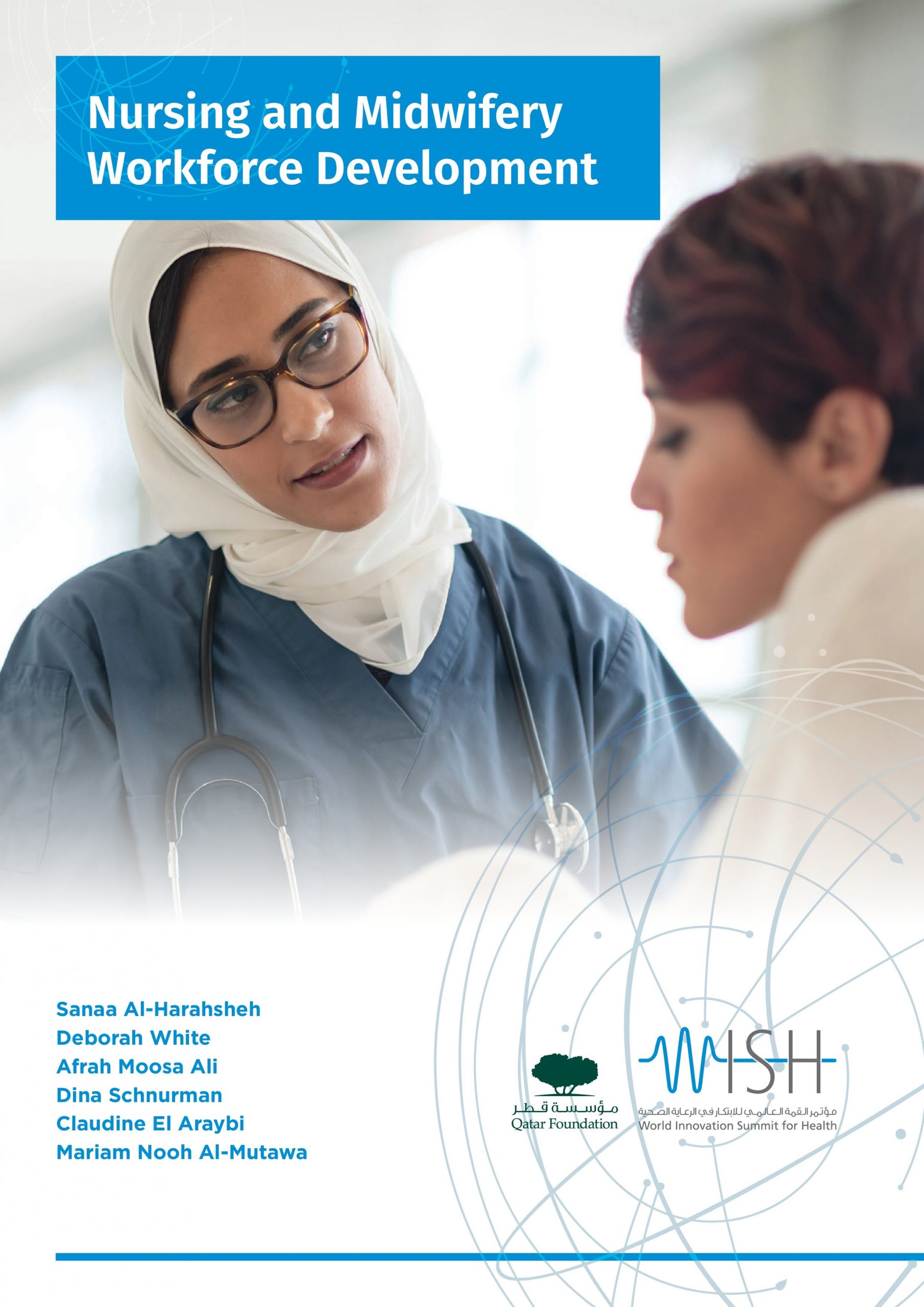Executive Summary
This policy briefing provides an overview of the progress in nursing and midwifery workforce development with a main emphasis on Qatar context. It highlights the current evidence about nurses’ and midwives’ contribution to health and wellbeing; global and national (the term national refers to the local level (State of Qatar) throughout the document) key issues and achievements in terms of education and training, as well as leadership; and collaborative partnerships and initiatives undertaken. It examines further current challenges and gaps and provides policy recommendations in order to achieve better workforce outcomes that in the short and long term can contribute to achieving innovative planning and service delivery to meet the healthcare needs of the population, increase access to healthcare services and support the Sustainable Development Goals (SDGs).
Nurses and midwives are at the heart of the healthcare systems. They have an essential role to play in the promotion of health and health literacy, prevention and management of non-communicable diseases (NCDs), emergency preparation and response, patient safety, and the delivery of integrated, people-centered care.1 As the world currently fights the coronavirus disease of 2019 (COVID-19) pandemic, the selfless contributions of nurses on the frontline of the global pandemic are countless. They are the largest professional group in most prominent countries and constitute over half of the global healthcare workforce population, representing a central element of primary healthcare and health systems in countries of all levels of socioeconomic development (Crisp et al. Nursing and midwifery: the key to the rapid and cost-effective expansion of high-quality universal health coverage. World Innovation Summit for Health, 2018). Thus, the strength, determination, and selflessness of nurses and midwives must be recognised and applauded globally and nationally.
In spite of signs of progress and development, there are key challenges and gaps that impact nursing and midwifery workforce development in the current landscape, while also referring to the challenges across the globe in this area. These challenges include an absence of a fulsome workforce modelling plan; and a lack of a uniformed, coordinated national strategic plan for entry to practice competencies, advanced education and leadership capacity building. Regulatory and organisational issues; a lack of coordinated intersectoral recruitment and retention; and marketing to raise the profile of nursing and midwifery are also challenges that impact workforce development.

